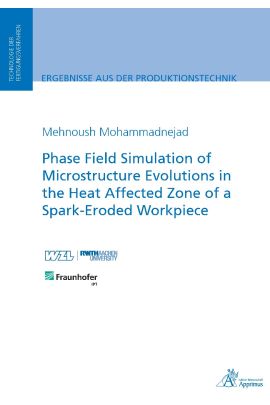Electrical discharge machining (EDM) is a non-contact material removal process,
which removes the workpiece by application of thermal load. EDM modifies
workpieces by numerous consecutive single electrical discharges which ignite
between the electrically conductive workpiece and tool. The applied thermal load
modifies the workpiece considerably in the surface and near surface layers. These
modifications change the functionality and properties of the workpiece. Thereby, It is
of grate importance to investigate and predict these changes. There are considerable
number of experimental investigations on this matter, however there are no studies on
the simulation of material modifications during EDM process. This work is dedicated
to determination of a new method to develop a simulation model for prediction of the
material modification during a single discharge in the heat affected zone (HAZ) of a
workpiece.
In the course of this work in the first step the microstructure evolutions were examined
experimentally. Moreover, for the first time, in this investigation the relation between
the microstructure evolution such as grain size as well as the change in the phase
fractions and temperature gradients were analysed. The applied temperature loads
during a single discharge were determined by using a heat transfer simulation model.
Further, after determination of the thermal loads such as maximum temperature and
temperature gradients, the material modification during a single discharge was
modelled and simulated. The simulation is based on an energy based model, which
predicts the changes in microstructure of material using the changes in Gibbs free
energy. The applied model in this work is based on phase field method. This
mathematical method is developed for describing the dynamics of a multiphase
system and had gain considerable attention in recent years amongst material
scientists.
The material investigated in this work is a low carbon steel (42CrMo4). The initial
microstructure of material is consisting of pearlite and ferrite grains. In the HAZ these
grains transfers to austenite and further martensite during a thermal cycle of a single
discharge. The developed model in this work was successful in modelling the
respective phase transformations during a single discharge. However, further efforts
for calibration of this model for more accurate grain size and phase fraction predictions
can be done.
| Autor | Mohammadnejad, Menoush |
|---|---|
| Gewicht | 0.219 kg |
| Erscheinungsdatum | 11.03.2021 |

